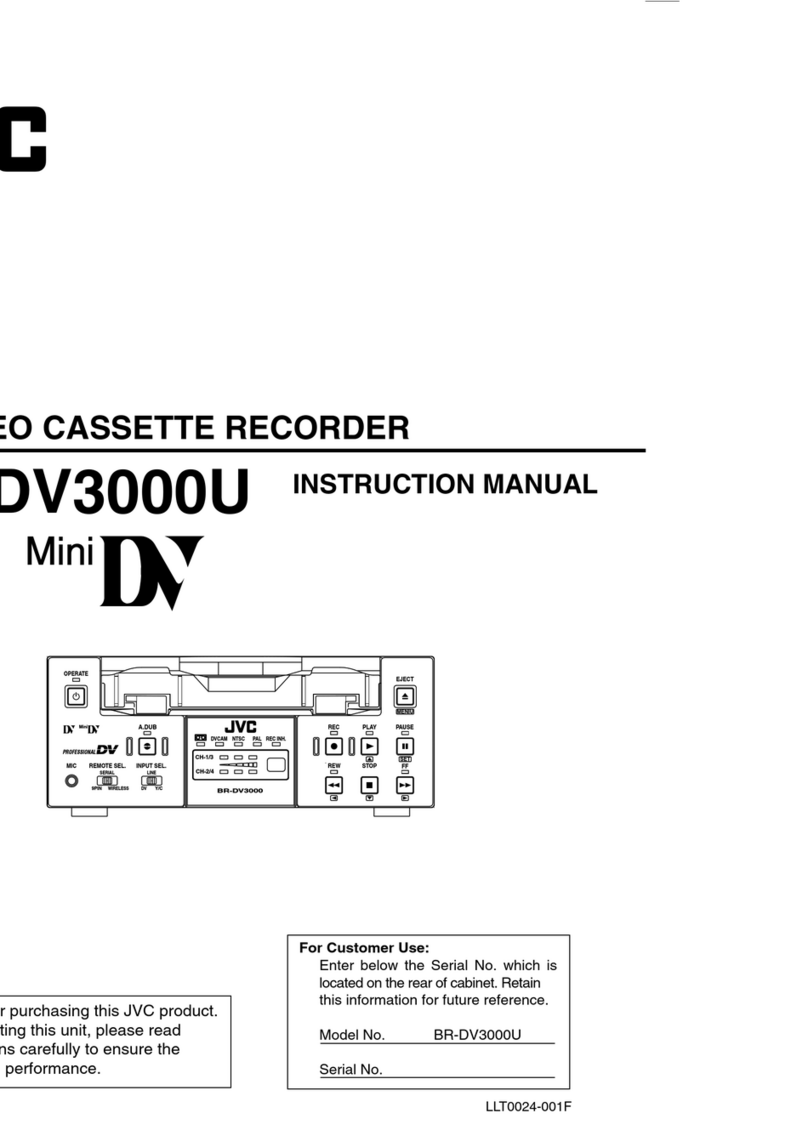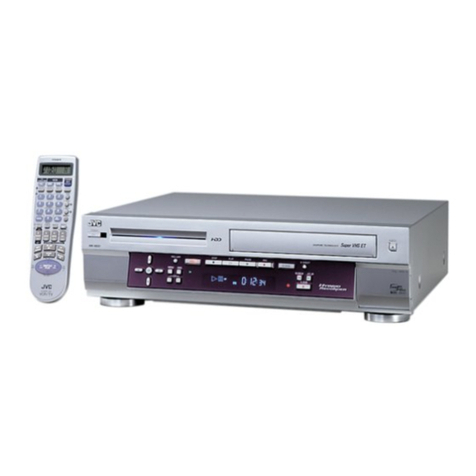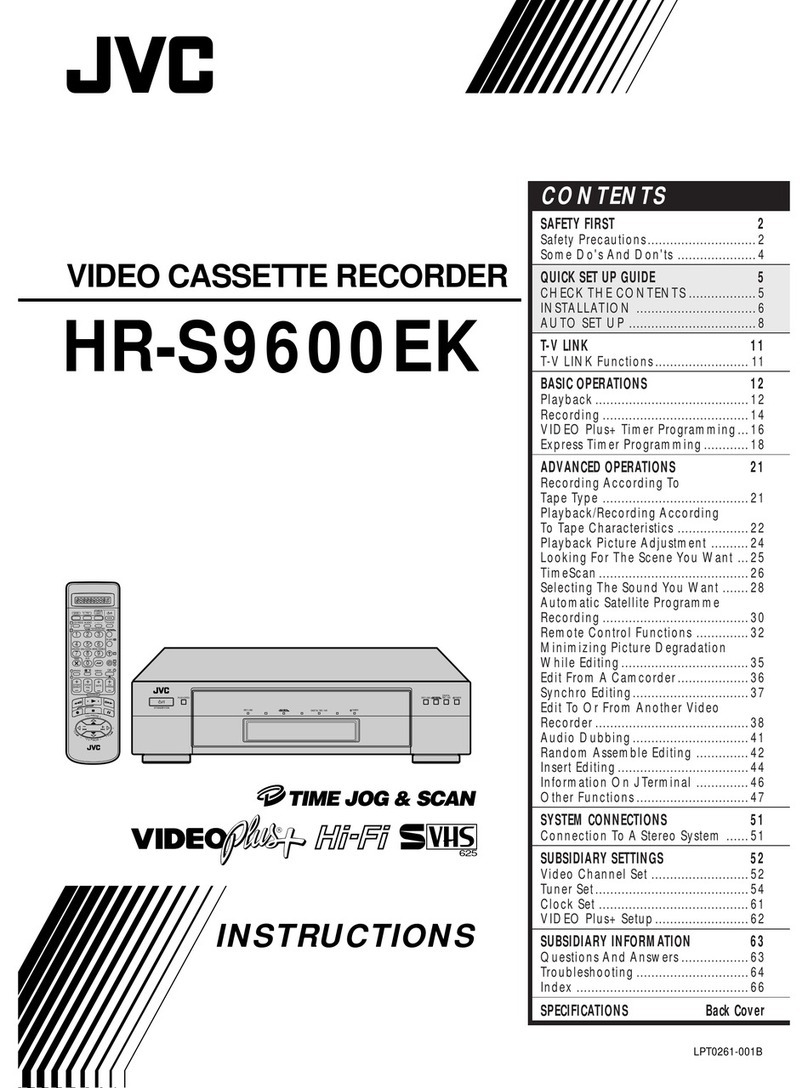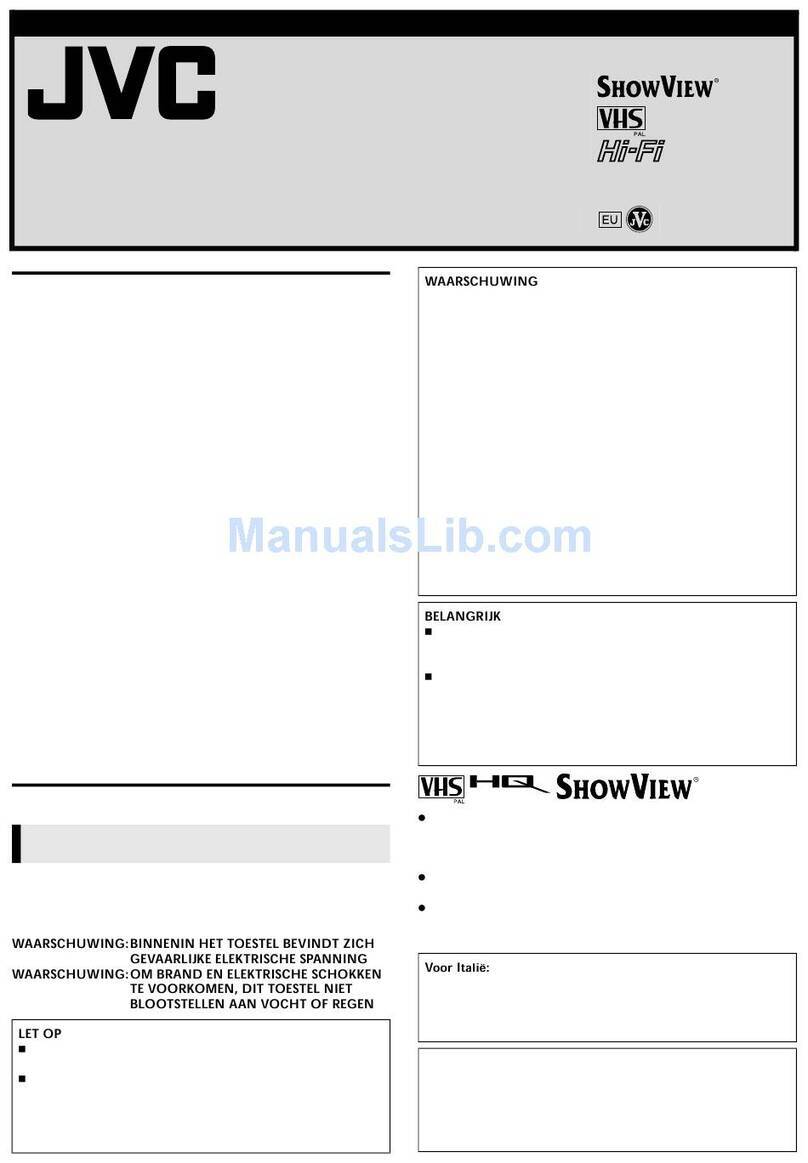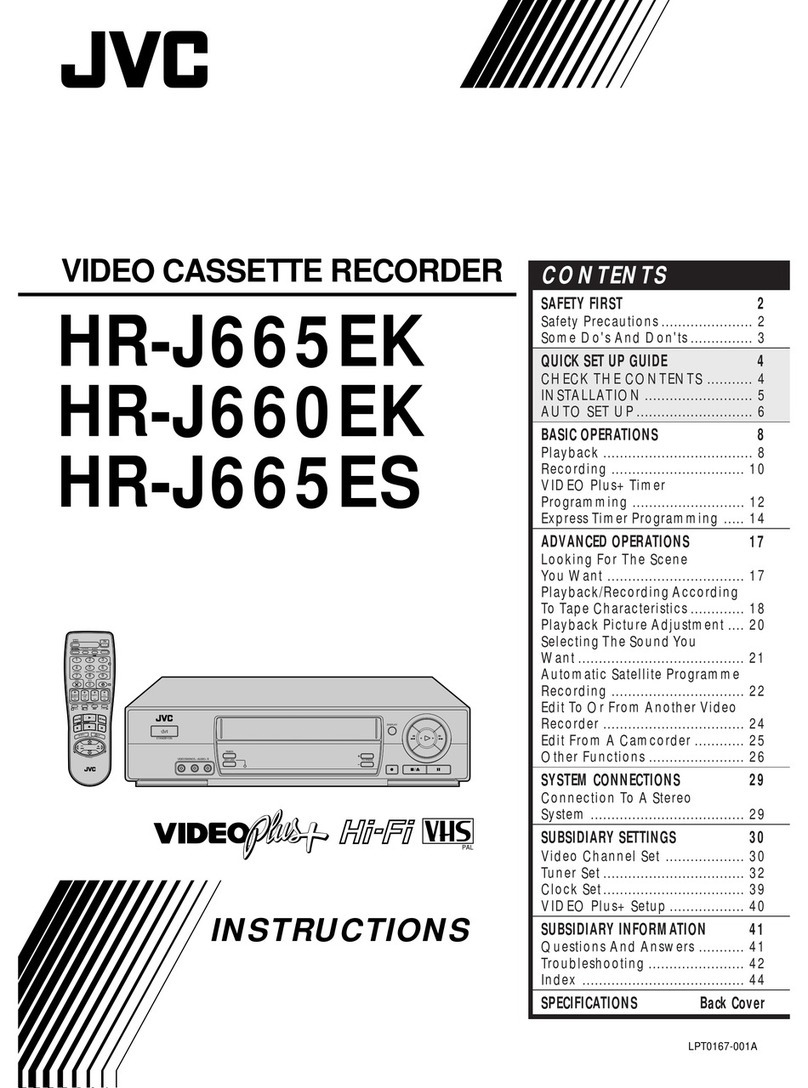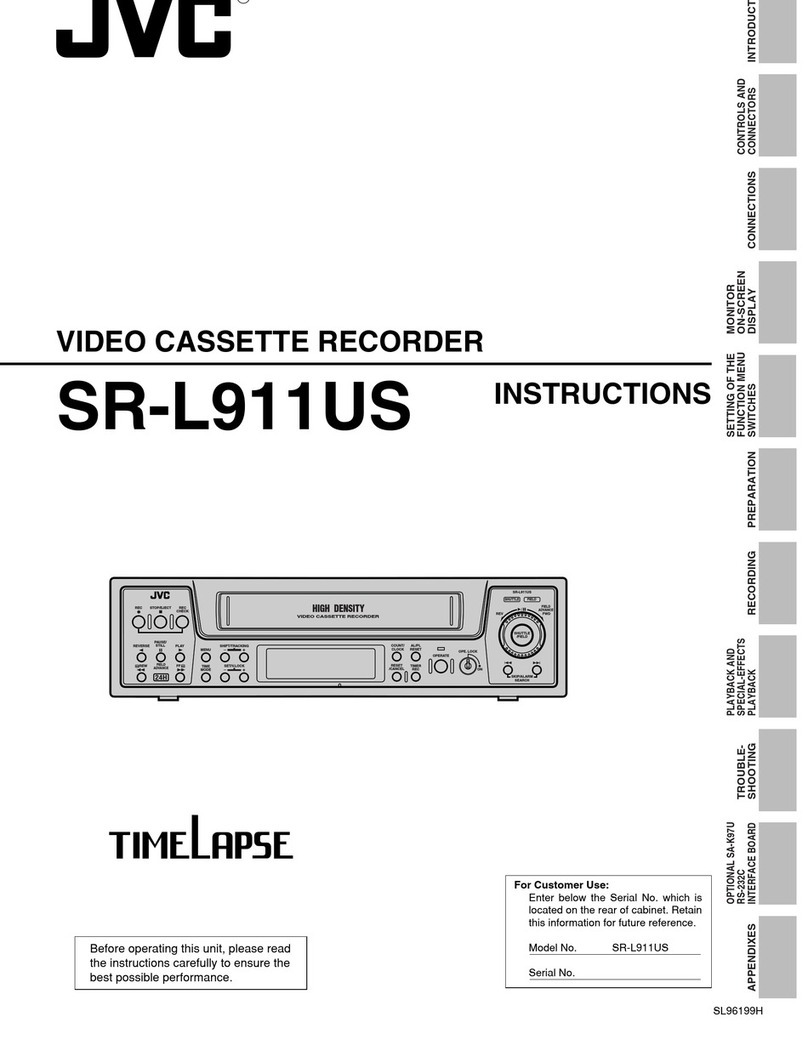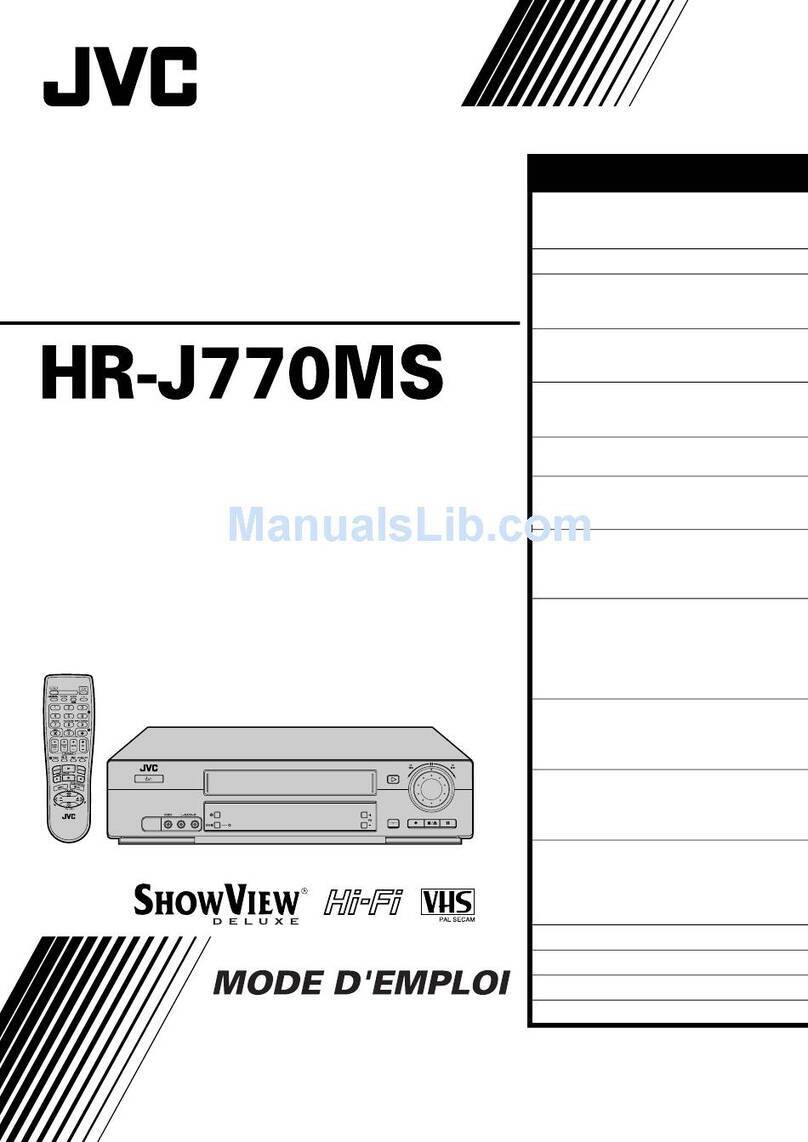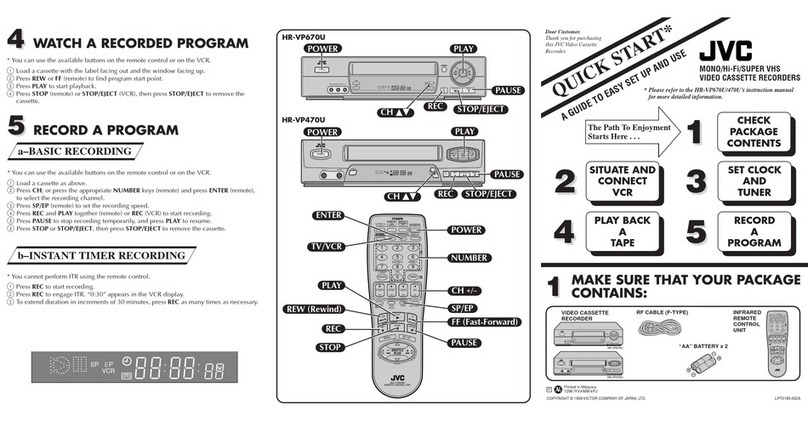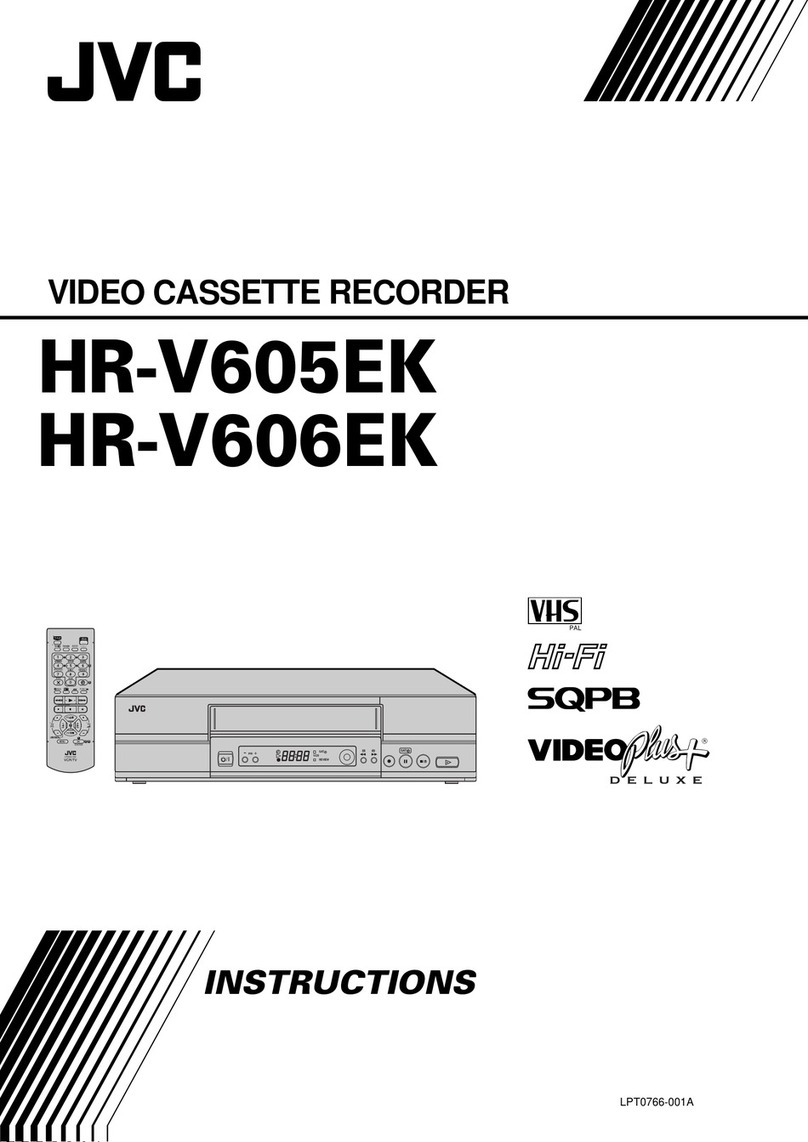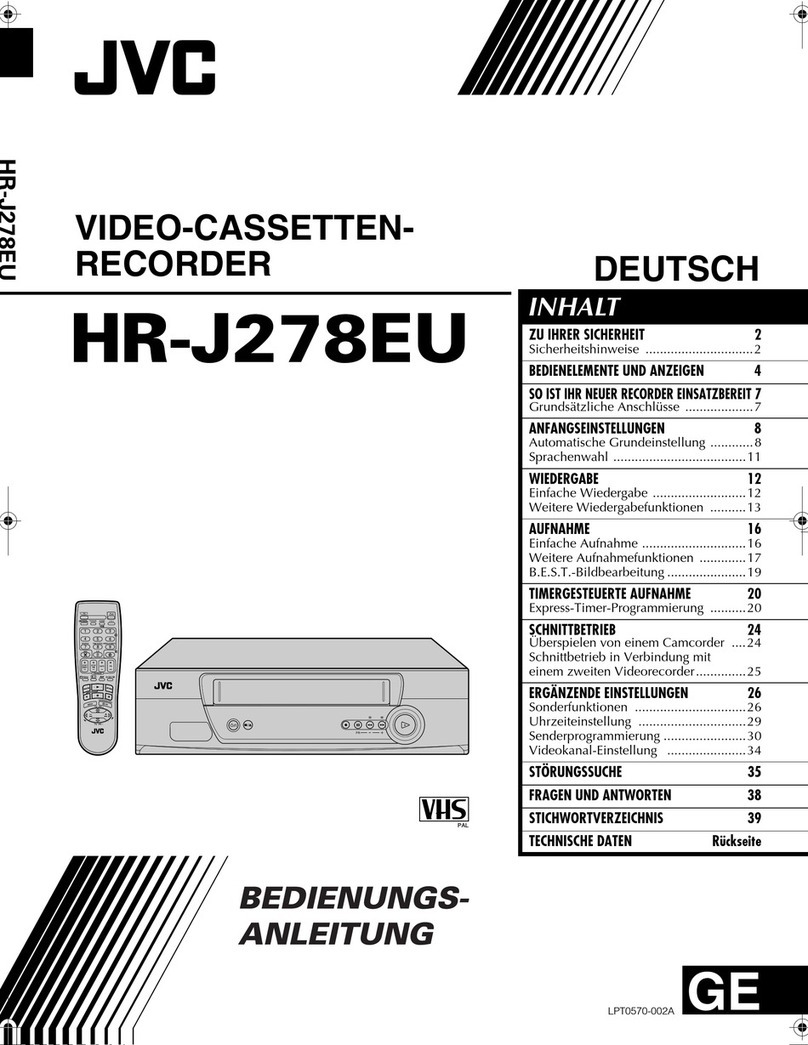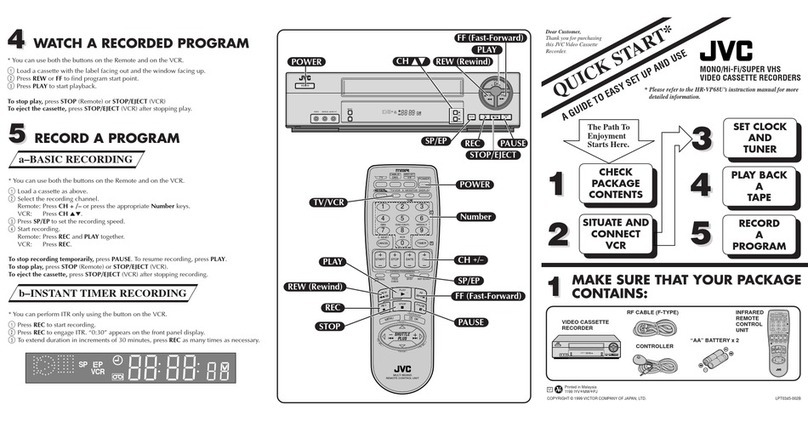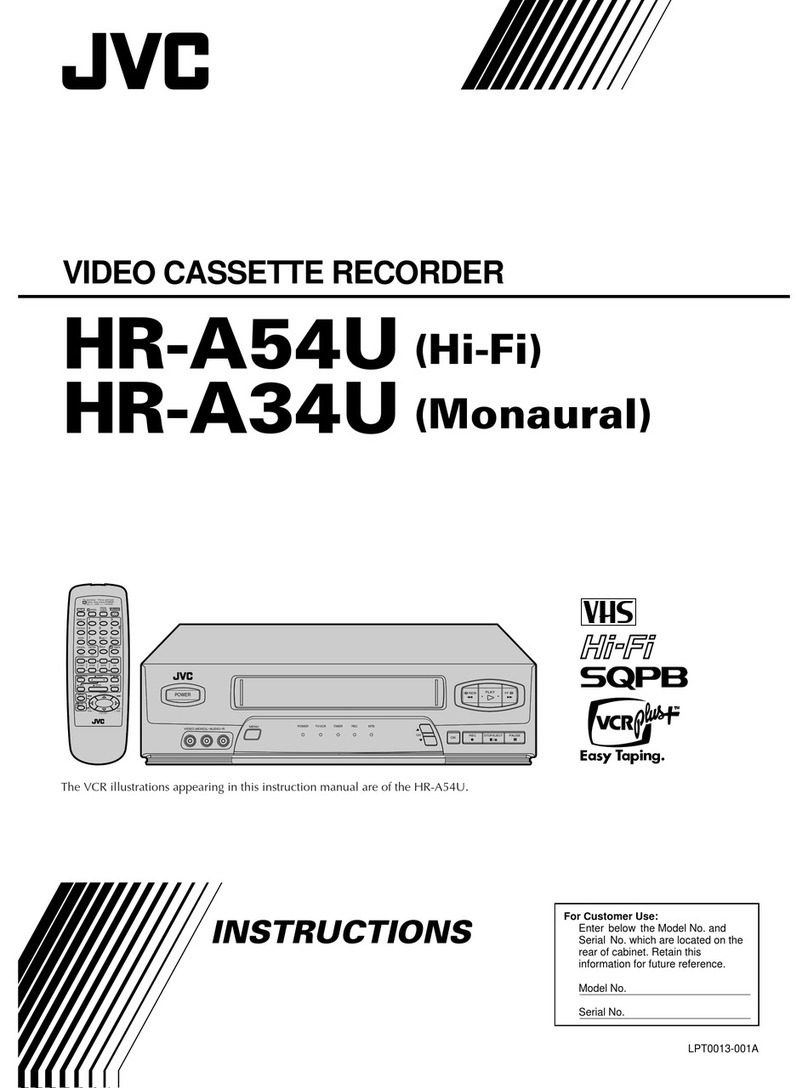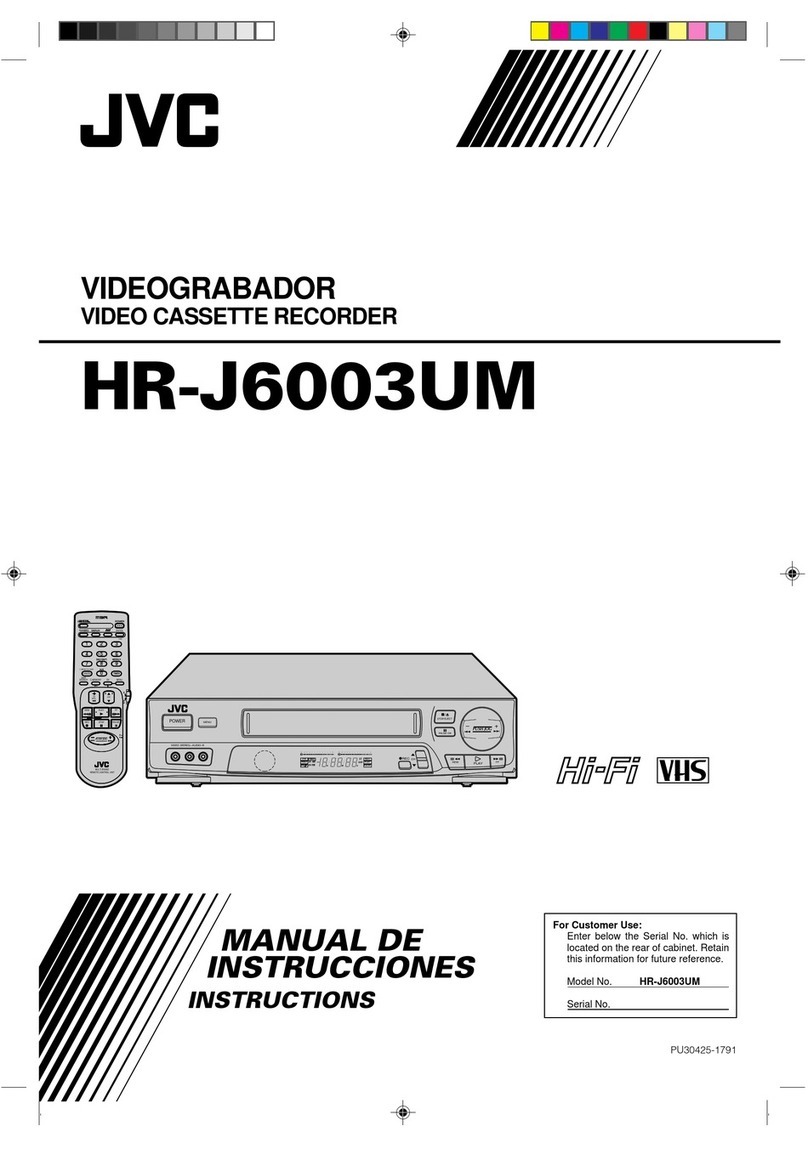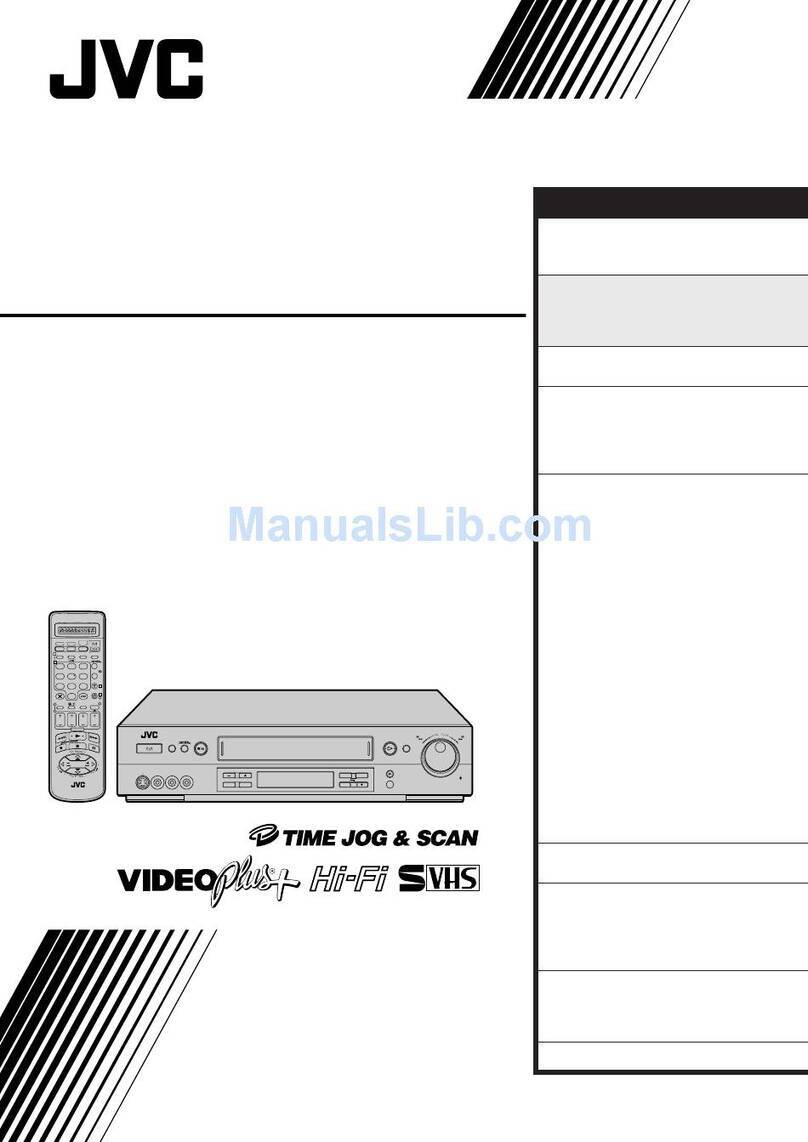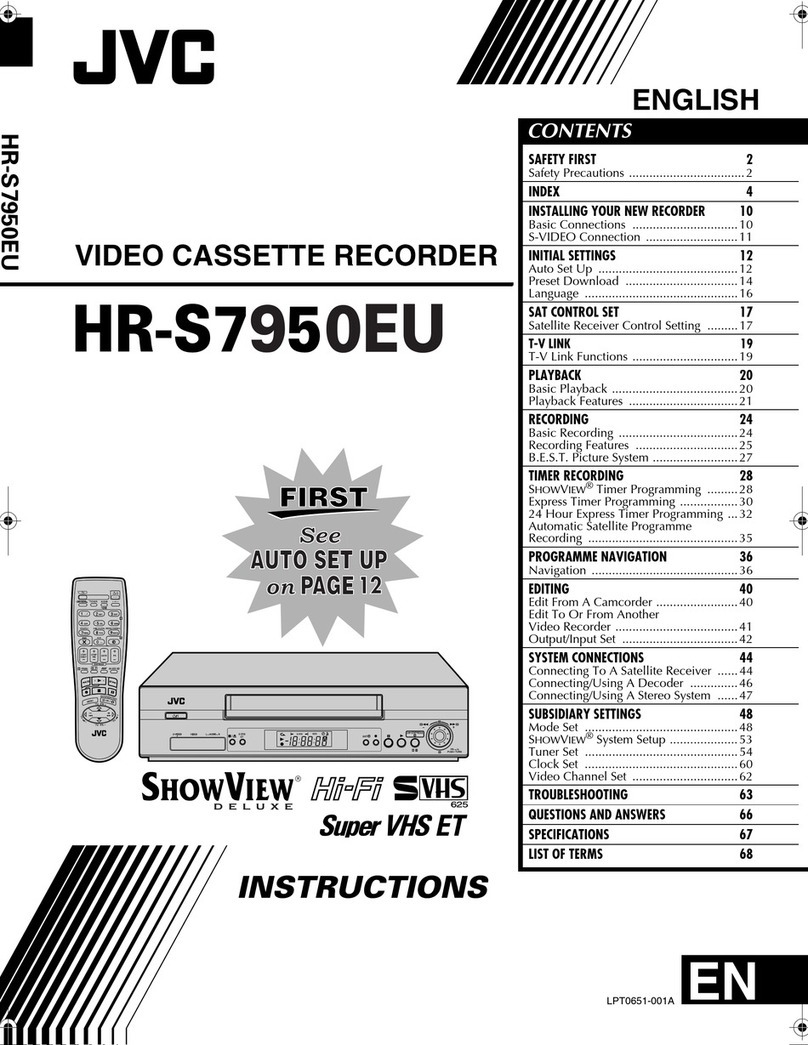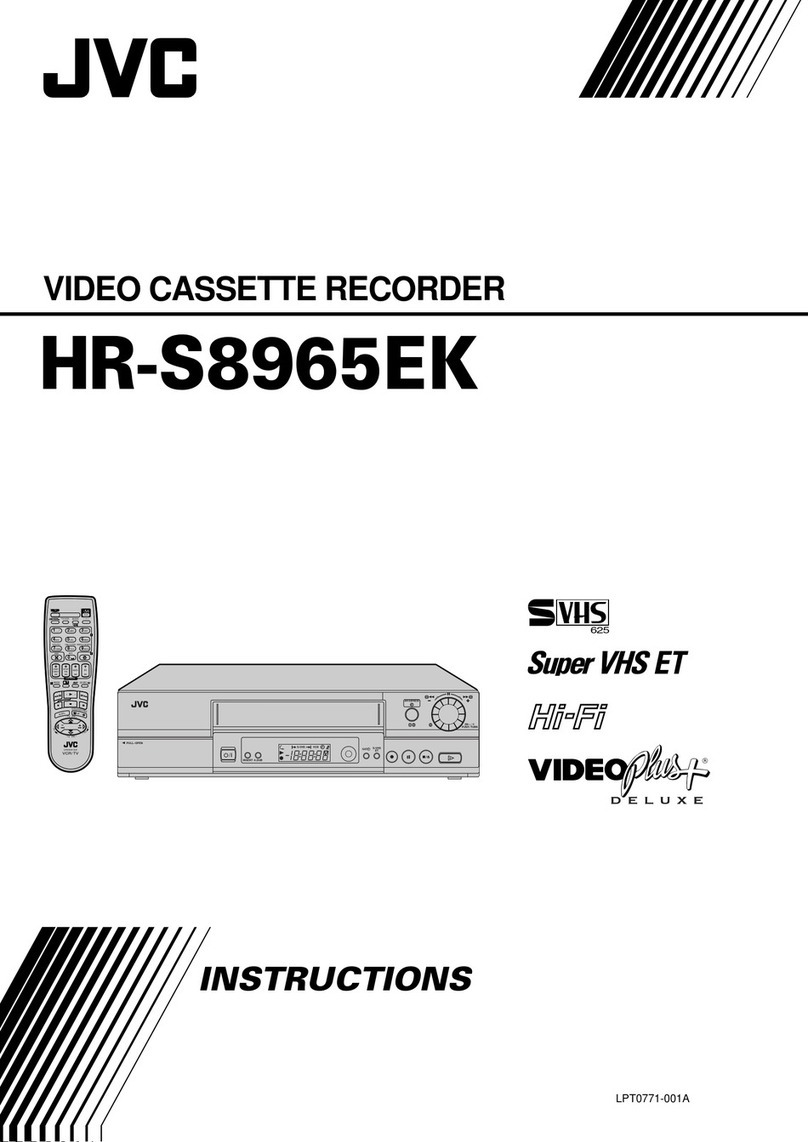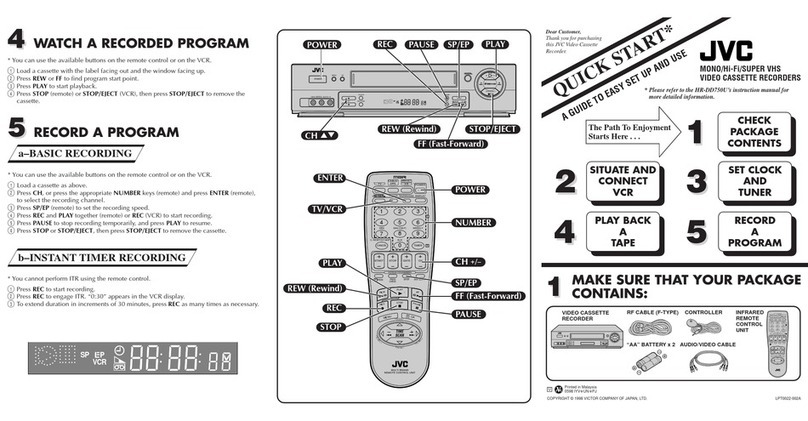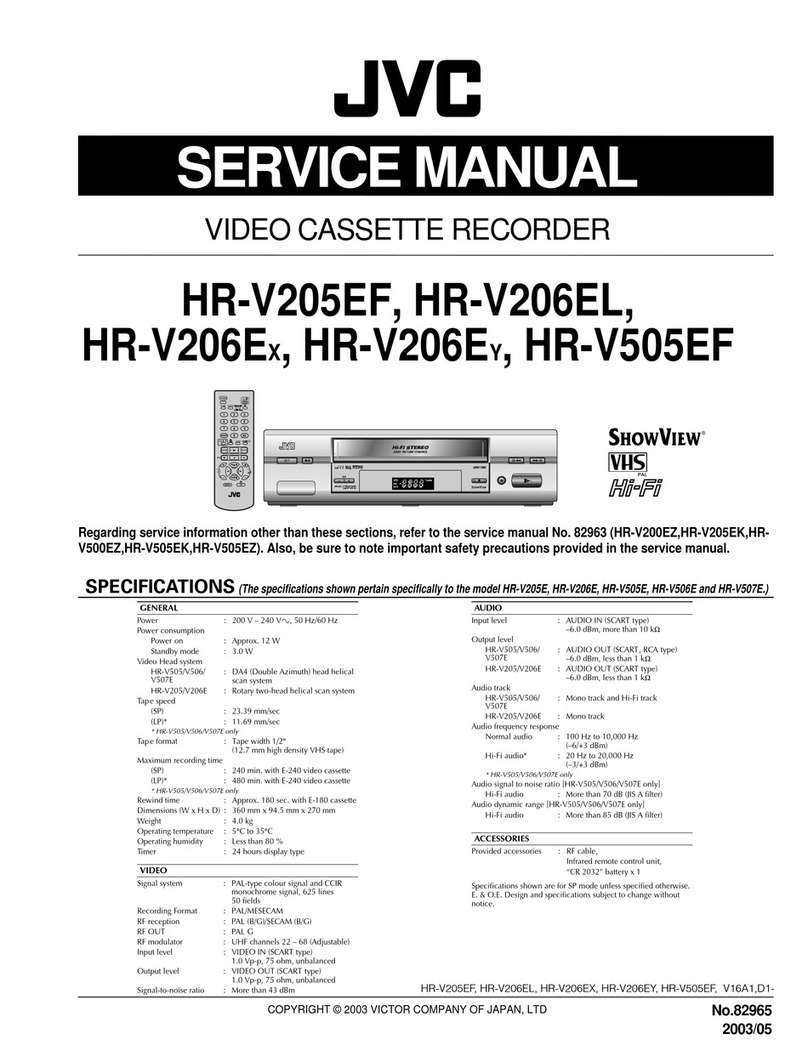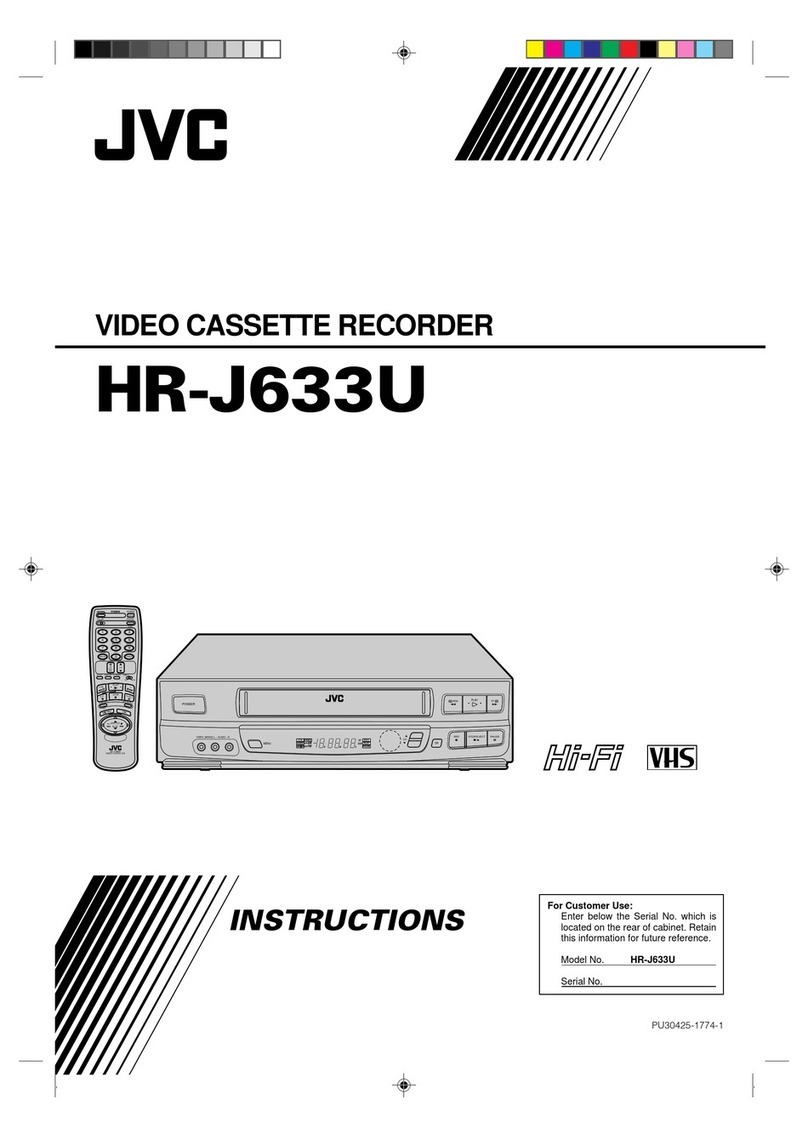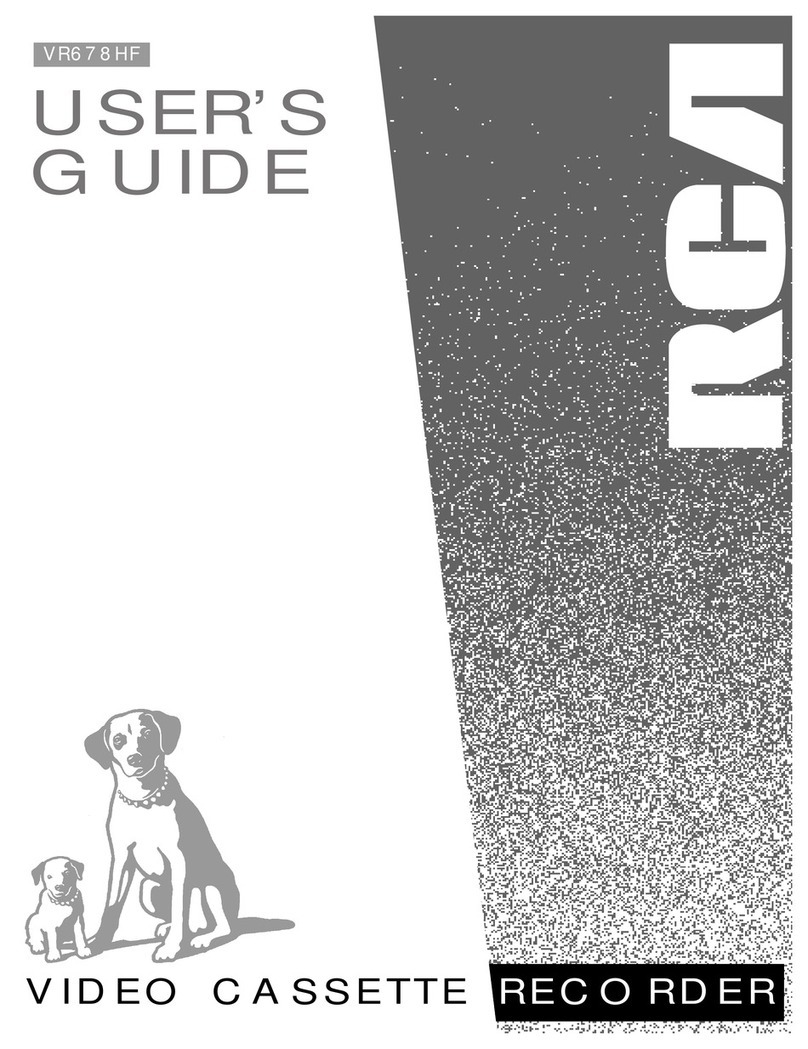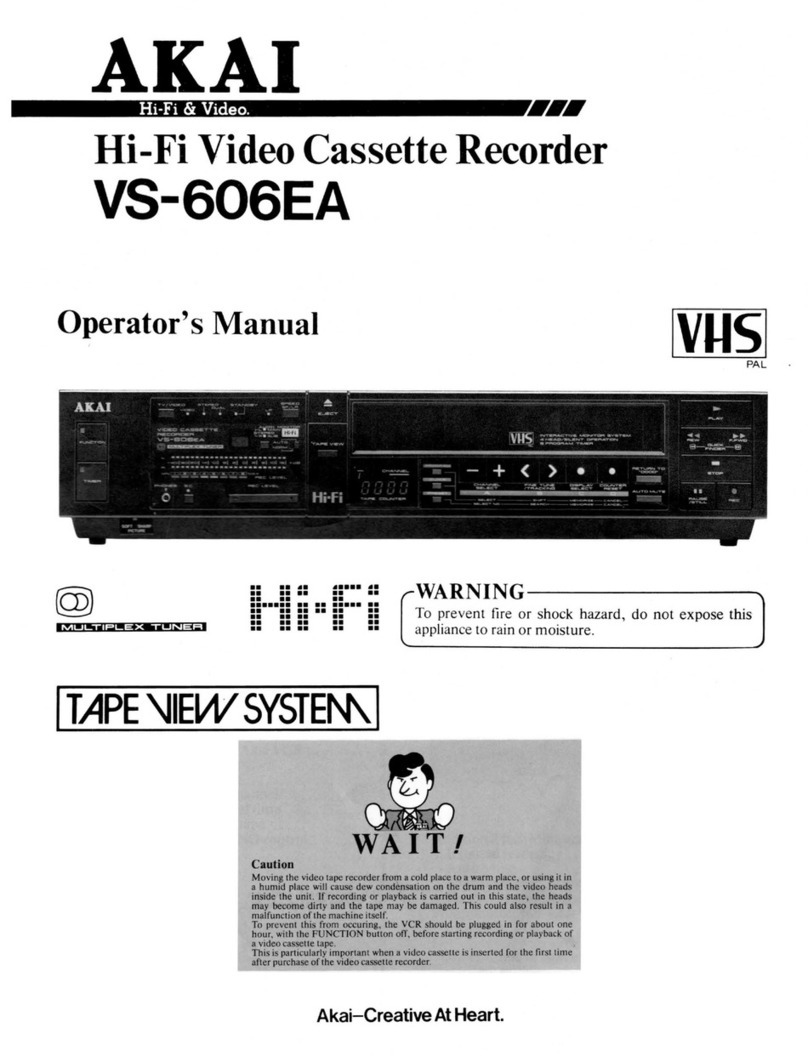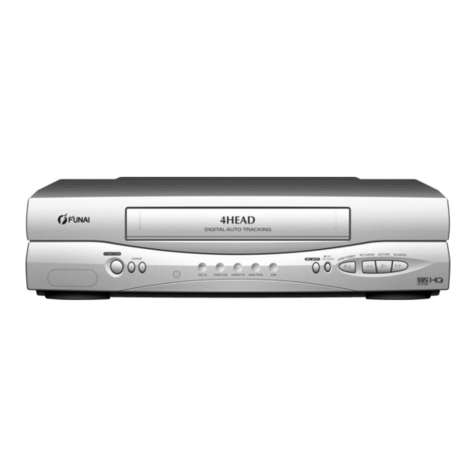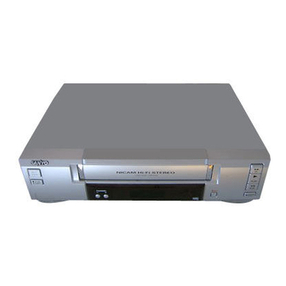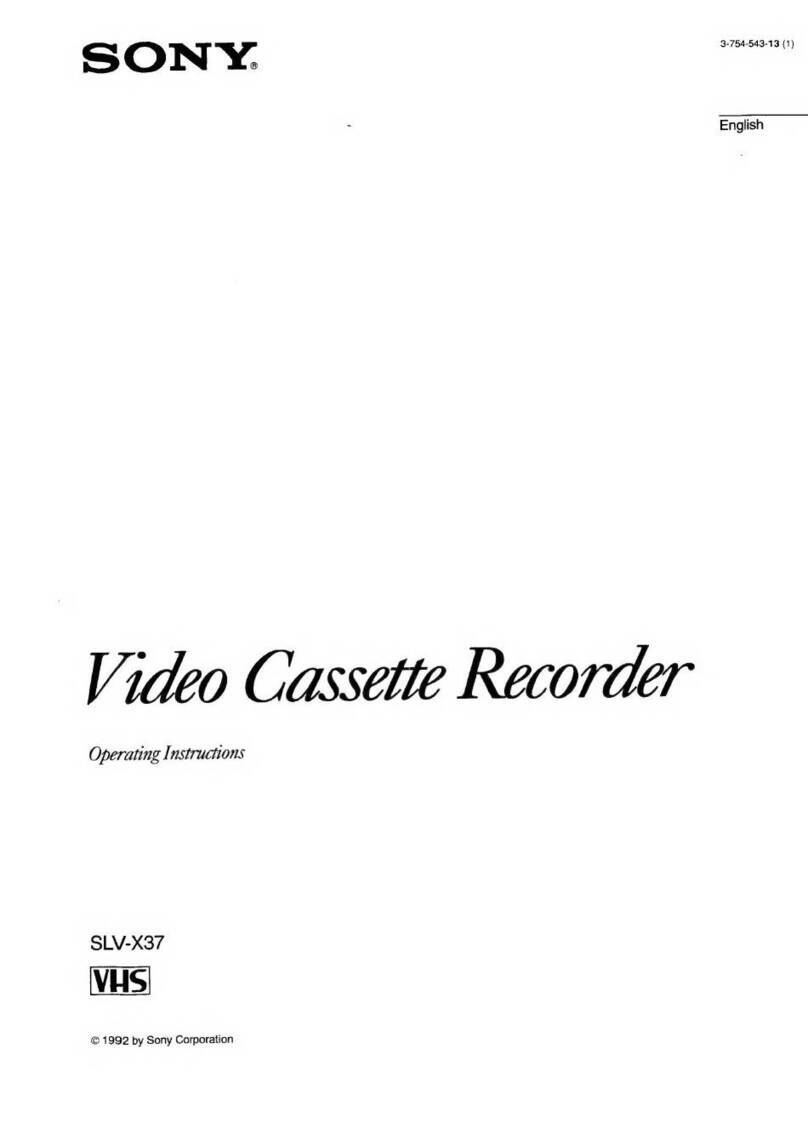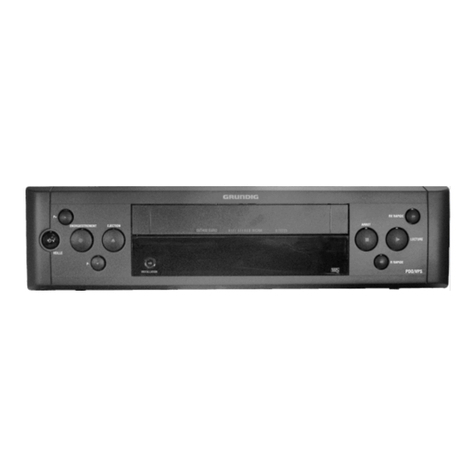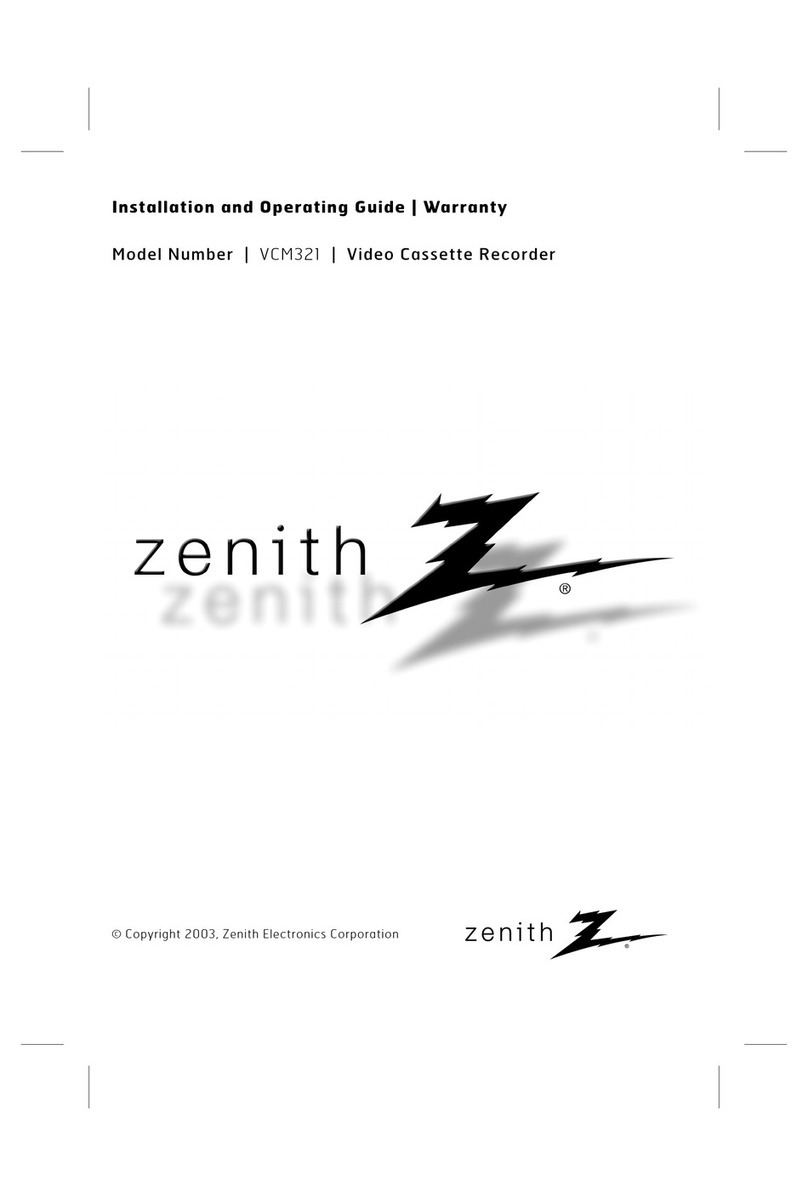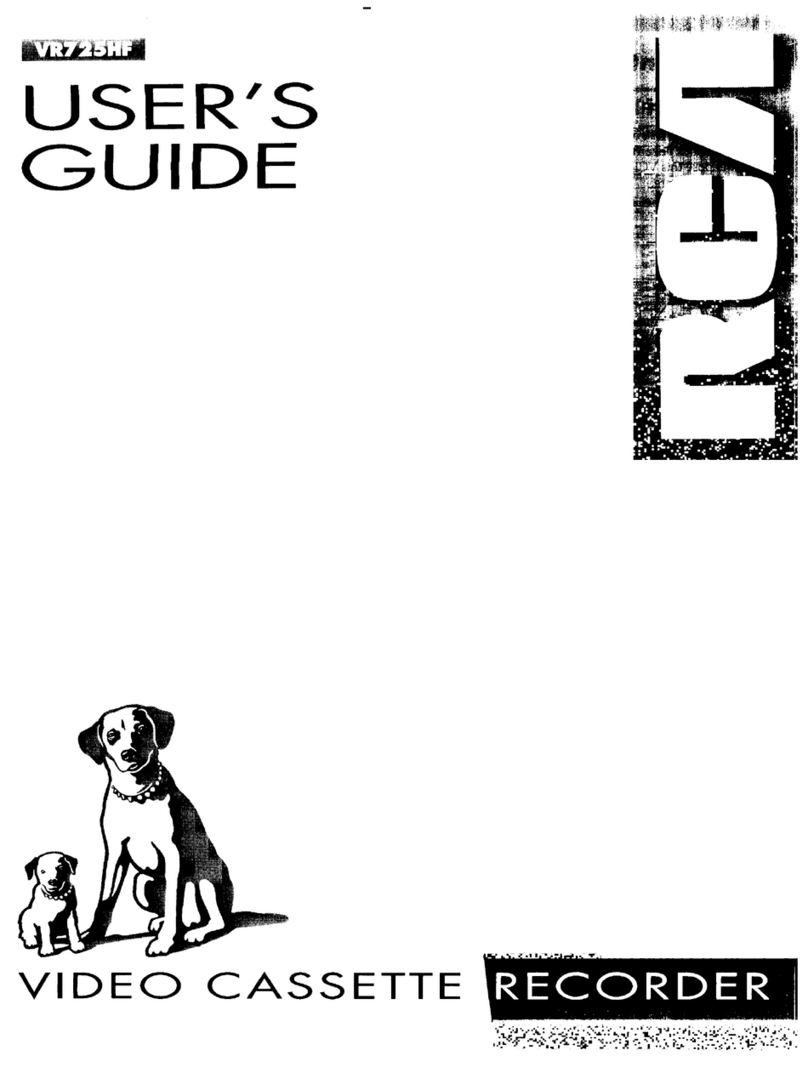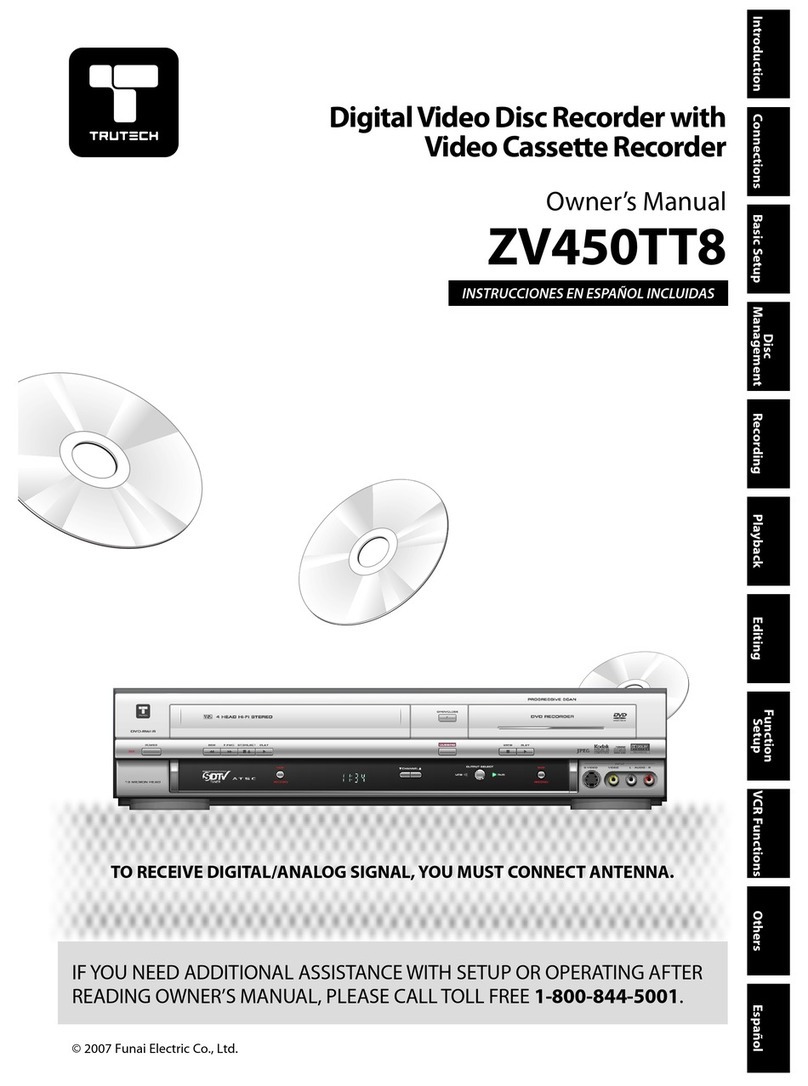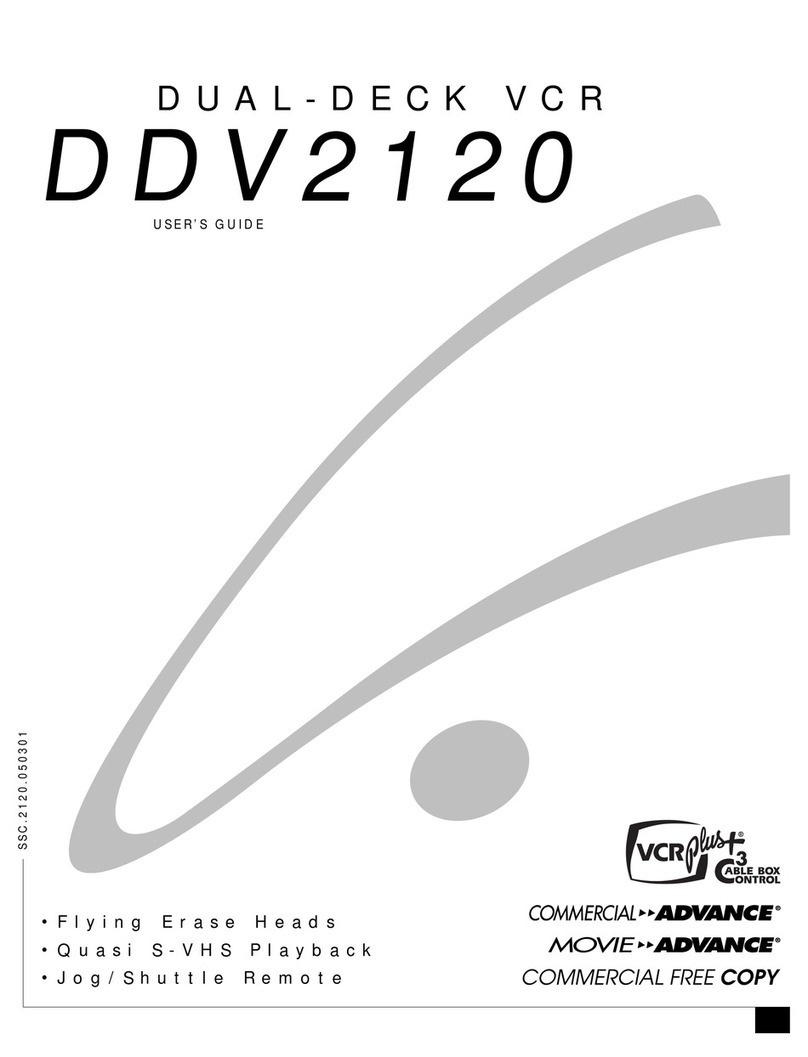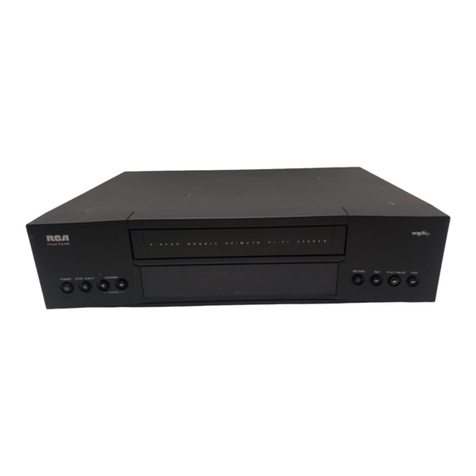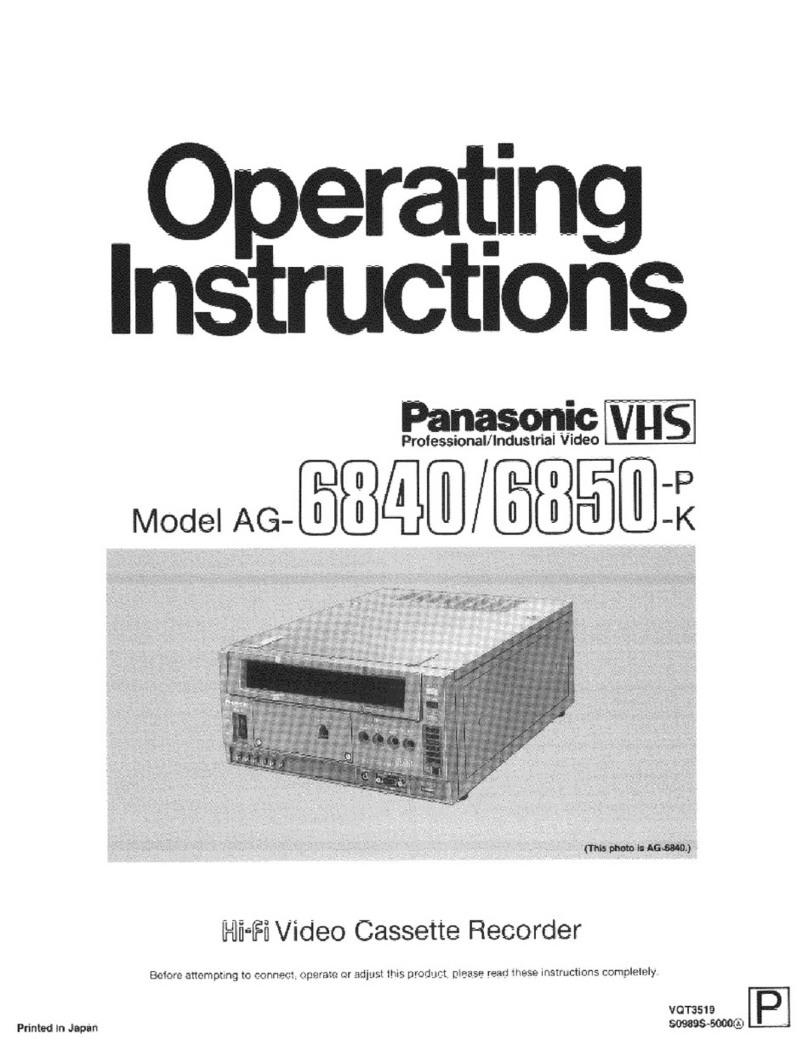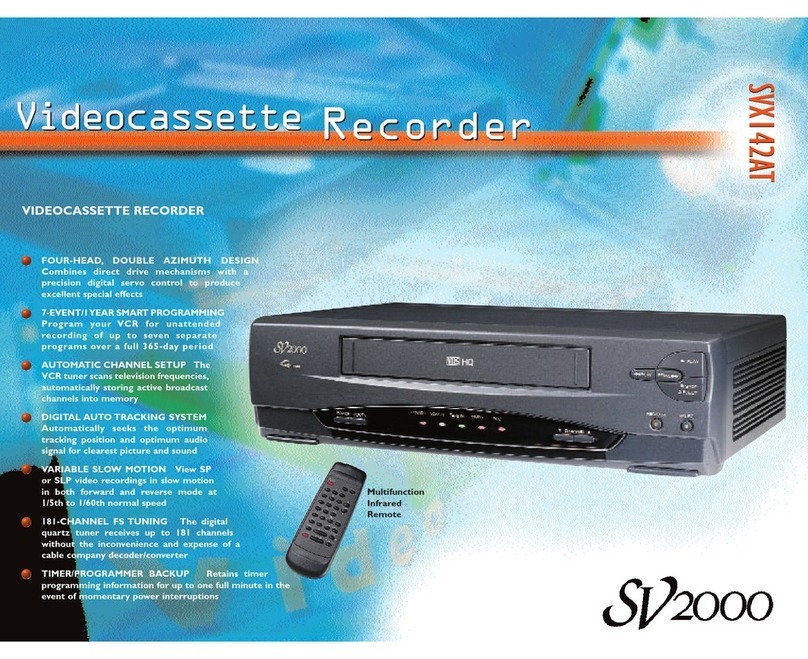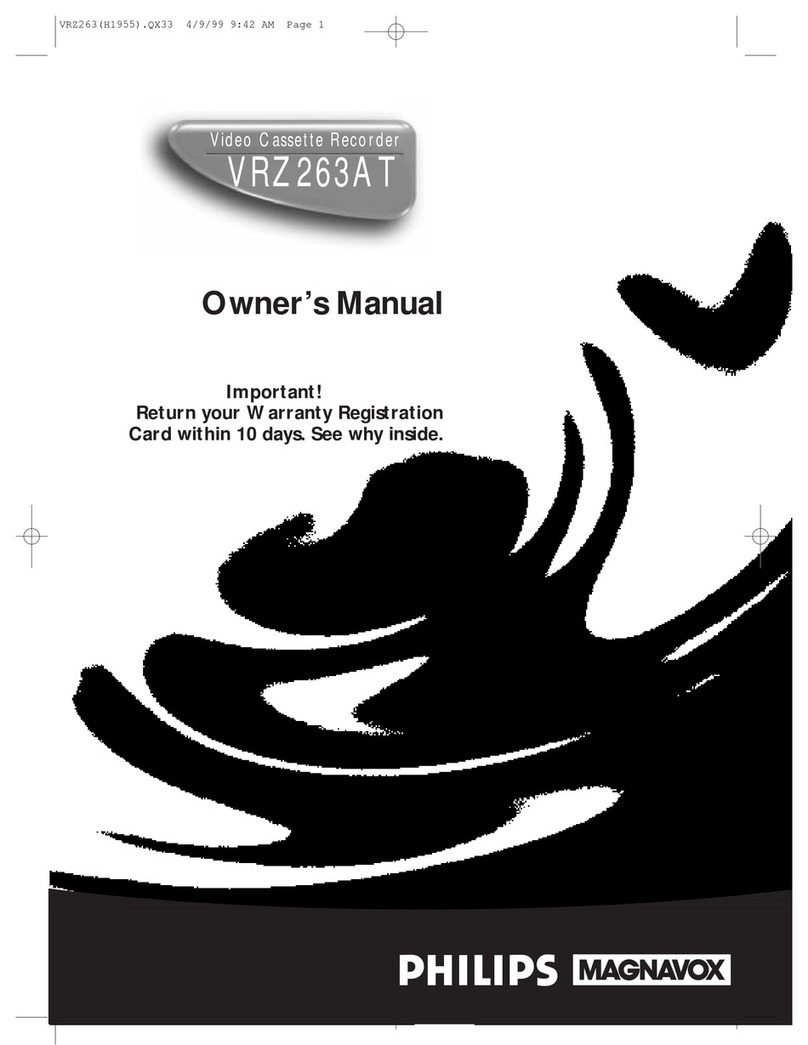
TABLE OF CONTENTS
Section Title Page Section Title Page
Important Safety Precautions
INSTRUCTIONS
1. DISASSEMBLY
1.1 Disassembly flow chart ..................................................... 1-1
1.2 How to read the disassembly and assembly..................... 1-1
1.3 Disassembly/assembly method ........................................ 1-1
1.4 Service position................................................................. 1-4
1.4.1 How to set the “Service position” ................................. 1-4
1.4.2 Precautions for cassete loding
in the “Service position”.................................................1-4
1.4.3 Cassete loding and ejection methods
in the “Service position”.................................................1-4
1.5 Mechanism service mode ................................................. 1-4
1.5.1 How to set the “Mechanism service mode” .................. 1-4
1.6 Jig RCU mode................................................................... 1-4
1.6.1 Setting the Jig RCU mode ........................................... 1-4
1.6.2 Setting the User RCU mode ........................................ 1-4
1.7 Emergency display function .............................................. 1-5
1.7.1 Displaying the EMG information .................................. 1-5
1.7.2 Clearing the EMG history ............................................. 1-5
1.7.3 EMG content description.............................................. 1-6
1.7.4 EMG detail information <1> ......................................... 1-7
1.7.5 EMG detail information <2> ......................................... 1-8
1.8 Servicing the video navigation function..............................1-9
1.8.1 Copying the video navigation data ................................1-9
1.8.2 Erasing the video navigation data ............................... 1-10
1.8.3 Factory setting level during shipment .........................1-10
2. MECHANISM ADJUSTMENT
2.1 Before starting repair and adjustment ............................... 2-1
2.1.1 Precautions .................................................................. 2-1
2.1.2 Checking for proper mechanical operations ................ 2-1
2.1.3 Manually removing the cassette tape .......................... 2-1
2.1.4 Jigs and tools required for adjustment ......................... 2-2
2.1.5 Maintenance and inspection ........................................ 2-3
2.2 Replacement of major parts .............................................. 2-6
2.2.1 Before starting disassembling
(Phase matching between mechanical parts) ............... 2-6
2.2.2 How to set the “Mechanism assembling mode” ........... 2-6
2.2.3 Cassette holder assembly............................................ 2-6
2.2.4 Pinch roller arm assembly............................................ 2-8
2.2.5 Guide arm assembly and press lever assembly .......... 2-8
2.2.6 A/C head ...................................................................... 2-8
2.2.7 Loading motor .............................................................. 2-8
2.2.8 Capstan motor ............................................................. 2-9
2.2.9 Pole base assembly (supply or take-up side) .............. 2-9
2.2.10 Rotary encoder ........................................................ 2-10
2.2.11 Clutch unit ................................................................ 2-10
2.2.12 Change lever assembly, direct gear,
clutch gear and coupling gear .................................. 2-10
2.2.13 Link lever.................................................................. 2-11
2.2.14 Cassette gear, control cam and worm gear ............. 2-11
2.2.15 Control plate............................................................. 2-11
2.2.16 Loading arm gear (supply or take-up side) and
loading arm gear shaft ............................................. 2-12
2.2.17 Take-up lever, take-up head and control plate guide 2-13
2.2.18 Capstan brake assembly ......................................... 2-13
2.2.19 Sub brake assembly (take-up side) ......................... 2-13
2.2.20 Main brake assembly (take-up side),
reel disk (take-up side) and
main brake assembly (supply side).......................... 2-13
2.2.21 Tension brake assembly, reel disk (supply side) and
tension arm assembly .............................................. 2-14
2.2.22 Idler lever, idler arm assembly ................................. 2-14
2.2.23 Stator assembly ....................................................... 2-14
2.2.24 Rotor assembly ........................................................ 2-14
2.2.25 Upper drum assembly .............................................. 2-15
2.3 Compatibility adjustment ................................................. 2-16
2.3.1 FM waveform linearity ................................................ 2-16
2.3.2 Height and tilt of the A/C head ................................... 2-17
2.3.3 A/C head phase (X-value) .......................................... 2-17
2.3.4 Standard tracking preset ............................................ 2-18
2.3.5 Tension pole position.................................................. 2-18
3. ELECTRICAL ADJUSTMENT
3.1 Precaution ......................................................................... 3-1
3.1.1 Required test equipments ............................................ 3-1
3.1.2 Required adjustment tools ........................................... 3-1
3.1.3 Color (colour) bar signal,Color (colour) bar pattern ..... 3-1
3.1.4 Switch settings and standard precautions ................... 3-1
3.1.5 EVR Adjustment ........................................................... 3-1
3.2 Servo circuit ...................................................................... 3-2
3.2.1 Switching point ............................................................. 3-2
3.2.2 Slow tracking preset..................................................... 3-2
3.3 Video circuit....................................................................... 3-2
3.3.1 D/A level....................................................................... 3-2
3.3.2 EE Y/PB Y (S-VHS/VHS) level..................................... 3-2
3.3.3 REC color (colour) level ............................................... 3-3
3.3.4 Video EQ (Frequency response).................................. 3-3
3.3.5 Auto picture initial setting ............................................. 3-4
3.4 Audio circuit....................................................................... 3-4
3.4.1 Audio REC FM ............................................................. 3-4
3.5 Syscon circuit .................................................................... 3-4
3.5.1 Timer clock ................................................................... 3-4
4. CHARTS AND DIAGRAMS
NOTES OF SCHEMATIC DIAGRAM ...................................... 4-1
CIRCUIT BOARD NOTES ...................................................... 4-2
4.1 BOARD INTERCONNECTIONS ....................................... 4-3
4.2 MAIN (VIDEO/AUDIO) SCHEMATIC DIAGRAM .............. 4-5
4.3 MAIN (SYSCON) SCHEMATIC DIAGRAM....................... 4-7
4.4 MAIN (SW.REG) SCHEMATIC DIAGRAM........................ 4-9
4.5 MAIN (TUNER) SCHEMATIC DIAGRAM........................ 4-11
4.6 CONNECTION SCHEMATIC DIAGRAM ........................ 4-13
4.7 3D/TBC(2M) SCHEMATIC DIAGRAM ............................ 4-15
4.8 TERMINAL SCHEMATIC DIAGRAM .............................. 4-17
4.9 DEMODULATOR SCHEMATIC DIAGRAM..................... 4-19
4.10 S-SUB SCHEMATIC DIAGRAM ................................... 4-21
4.11 NAVIGATION SCHEMATIC DIAGRAM ......................... 4-23
4.12 SW/DISPLAY, REC SAFETY, JACK AND ADV.JOG
SCHEMATIC DIAGRAMS ............................................ 4-25
4.13 SECAM SCHEMATIC DIAGRAM[HR-S9850MS] ..........4-27
4.14 SECAM CIRCUIT BOARD[HR-S9850MS]..................... 4-28
4.15 P/S CONVERTER SCHEMATIC DIAGRAM
[HR-S9850MS] ..............................................................4-29
4.16 P/S CONVERTER CIRCUIT BOARD[HR-S9850MS] ....4-31
4.17 MAIN AND AUDIO ERASE CIRCUIT BOARD .............. 4-33
4.18 SW/DISPLAY, REC SAFETY, JACK, ADV.JOG,
DEMODULATOR AND S-SUB CIRCUIT BOARDS ..... 4-35
4.19 3D DIGITAL/2M CIRCUIT BOARD ................................4-37
4.20 TERMINAL CIRCUIT BOARD........................................ 4-38
4.21 NAVIGATION CIRCUIT BOARD .................................... 4-39
4.22 FDP GRID ASSIGNMENT AND ANODE
CONNECTION ..............................................................4-40
4.23 REMOTE CONTROLLER SCHEMATIC DIAGRAM ..... 4-41
4.24 CPU PIN FUNCTION .................................................... 4-42
4.25 WAVEFORMS ............................................................... 4-43
4.26 VOLTAGE CHARTS ...................................................... 4-45
4.27 SYSTEM CONTROL BLOCK DIAGRAM...................... 4-47
4.28 VIDEO BLOCK DIAGRAM ............................................ 4-49
4.29 AUDIO BLOCK DIAGRAM ............................................ 4-53
5. PARTS LIST
5.1 PACKING AND ACCESSORY ASSEMBLY <M1> ............ 5-1
5.2 FINALASSEMBLY <M2> .................................................. 5-2
5.3 MECHANISM ASSEMBLY <M4> ...................................... 5-4
5.4 ELECTRICAL PARTS LIST............................................... 5-6
MAIN BOARD ASSEMBLY <03> ............................................ 5-6
3D DIGITAL/2M BOARD ASSEMBLY <05>.......................... 5-13
TERMINAL BOARD ASSEMBLY <06> ................................. 5-14
A/C HEAD BOARD ASSEMBLY <12> .................................. 5-15
DEMOD BOARD ASSEMBLY <14> ...................................... 5-16
S-SUB BOARD ASSEMBLY <15> ......................................... 5-16
NAVIGATION BOARD ASSEMBLY <19>............................... 5-17
SW/DISPLAY BOARD ASSEMBLY <28>...............................5-18
REC SAFETY BOARD ASSEMBLY <32>.............................. 5-18
JACK BOARD ASSEMBLY <36> .......................................... 5-18
ADV.JOG BOARD ASSEMBLY <38> .................................... 5-18
AUDIO ERASE BOARD ASSEMBLY <46>........................... 5-19
LOADING MOTOR BOARDASSEMBLY <55>..................... 5-19
The following table lists the differing points between models (HR-S9850EK and HR-S9850EU) in this series.
MODEL HR-S9850EK
ITEM
POWER PLUG 3PIN(CLASSII) CEE(CLASSII)
VIDEO SYSTEM PAL/NTSC ON PAL TV PAL/MESECAM(MANUAL)/NTSC ON PAL TV
BROADCASTING STANDARD I B/G, D/K
STEREO DECODER NICAM NICAM/A2
RF OUT SYSTEM [INITIAL] I G/K
VCR PLUS+
VIDEOPLUS+ DELUXE
SHOWVIEW DELUXE
VPS(AUTO) NOT USED USED
INITIAL(TIMER) OFF GER, AUS, SWISS:ON, OTHER:OFF
LANGUAGE[INITIAL](ON SCREEN DISPLAY) ENG 13 LANG.[E]
HR-S9850EU
